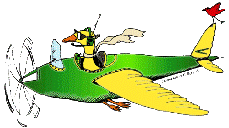Bird Strike Committee Proceedings
Date of this Version
October 2002
Document Type
Article
Abstract
As a safety professional at Evergreen International Airlines, I have first-hand experience of the damage caused by wildlife. Seven major bird strikes have cost Evergreen approximately $20 million in damages and lost revenue over a 5-year period. These events often occurred during critical phases of flight. For example, one Evergreen B-747 suffered severe damage to engine and pylon structure with subsequent loss of control during climb. You cannot train for every possible aircraft failure induced by bird strikes. The time will come, with or without the collection of additional bird-strike statistics, when damage from a bird strike will exceed the crew's ability to recover an airplane at the limits of its performance envelope.
Most carriers sitting at the ATA Safety Council can attest to similar experiences resulting in the same flight crew excitement. However, we are not tasked with regulatory responsibility for controlling wildlife hazards on air fields. This activity belongs to the nation's airports. Our concern over the number of resident birds located on or near airports has increased to the point that we are moved to make known our concerns in a public way. We do not wish to be blindsided by a major accident when the means to reduce the risk of such accidents are available.
While the full extent of the risk is not always clear, it is clear that a bird-strike risk exists. Our costs from strike events point to it. The statistics and literature attest to increasing populations of resident and migratory birds and the increase in air traffic. Aircraft damage costs increase. Clearly, the opportunity of direct interaction between aircraft and birds has increased. It would seem that we have sufficient data to expect action. The military spends a significant amount of money in prevention efforts. Their actions to date have reduced the risks to flight crews and reduced loss of aircraft to wildlife hazards. The commercial aviation world should do no less.
Yet, I hear that we need more reporting or that the full extent of the risks is not known. Action is costly and should wait until the data point to a real problem. The ATA Safety Council finds this line of reasoning flawed. FAA Guidelines and FAR's are in place. Effective compliance with these rules and guidelines can reduce further the risks that we currently perceive. These are low hanging fruit.
Some airports are in excellent compliance---some are not. In Safety, our efforts are focused on the reduction of risk. The expectation of compliance to federal standards and guidelines is reasonable. The means to do so are available and should be enforced consistently nationwide. While new and effective means of reducing wildlife presence are developed, much can be done now if regulations are effectively enforced at all U.S. domestic airports.


